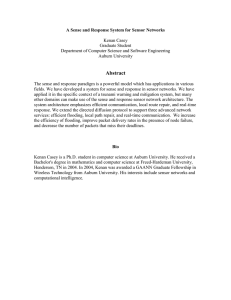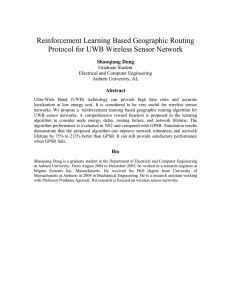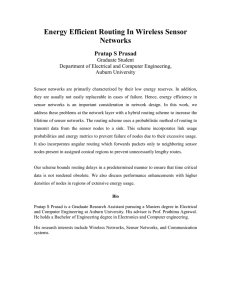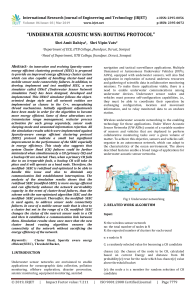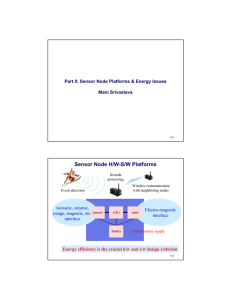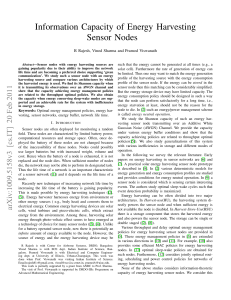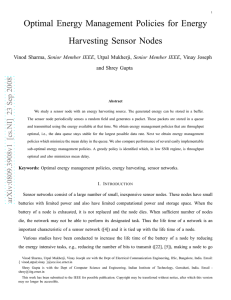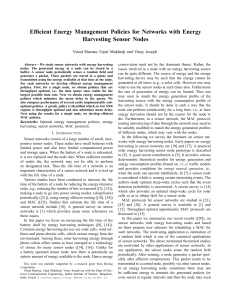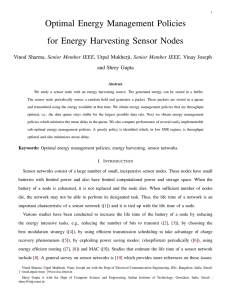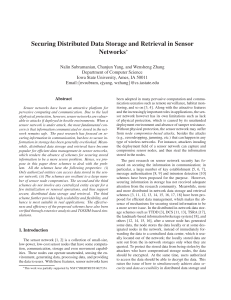A Micro Server Architecture for Energy Reduction in Hierarchical Sensor Networks Abstract
advertisement
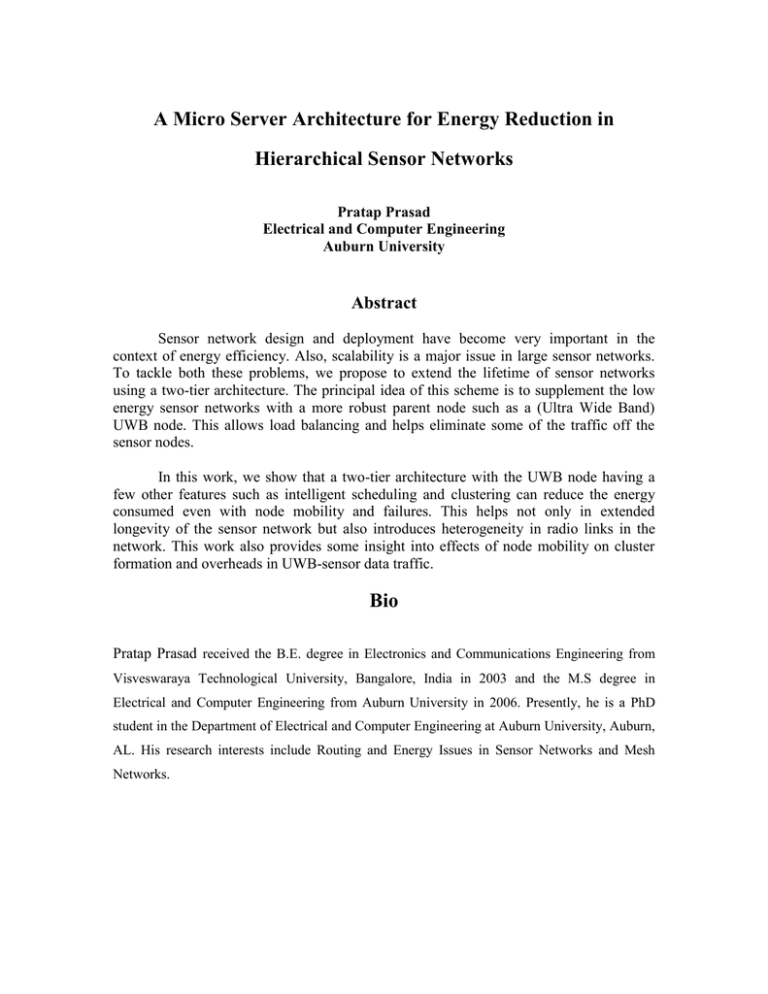
A Micro Server Architecture for Energy Reduction in Hierarchical Sensor Networks Pratap Prasad Electrical and Computer Engineering Auburn University Abstract Sensor network design and deployment have become very important in the context of energy efficiency. Also, scalability is a major issue in large sensor networks. To tackle both these problems, we propose to extend the lifetime of sensor networks using a two-tier architecture. The principal idea of this scheme is to supplement the low energy sensor networks with a more robust parent node such as a (Ultra Wide Band) UWB node. This allows load balancing and helps eliminate some of the traffic off the sensor nodes. In this work, we show that a two-tier architecture with the UWB node having a few other features such as intelligent scheduling and clustering can reduce the energy consumed even with node mobility and failures. This helps not only in extended longevity of the sensor network but also introduces heterogeneity in radio links in the network. This work also provides some insight into effects of node mobility on cluster formation and overheads in UWB-sensor data traffic. Bio Pratap Prasad received the B.E. degree in Electronics and Communications Engineering from Visveswaraya Technological University, Bangalore, India in 2003 and the M.S degree in Electrical and Computer Engineering from Auburn University in 2006. Presently, he is a PhD student in the Department of Electrical and Computer Engineering at Auburn University, Auburn, AL. His research interests include Routing and Energy Issues in Sensor Networks and Mesh Networks.

